- List Of .NET Interview Questions
- Conclusion
Top 70 .NET Interview Questions To Prepare For The Technical Round
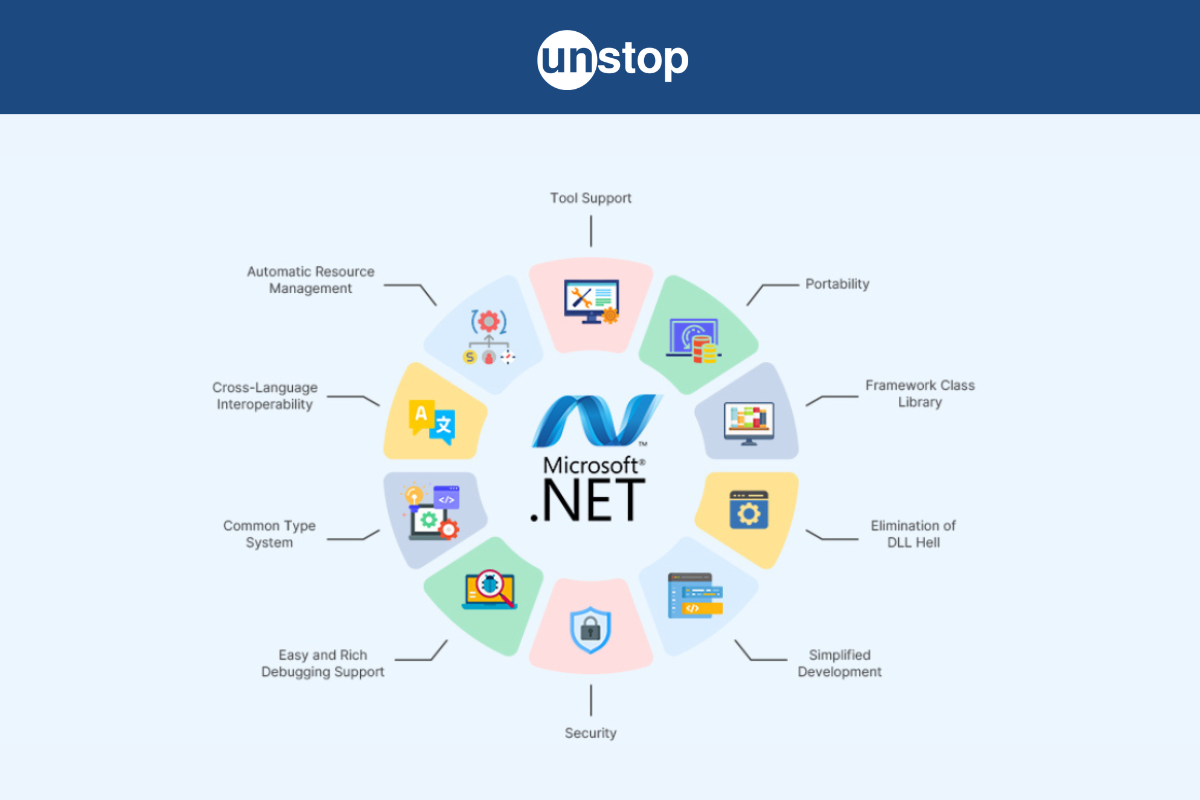
The .NET framework comes included with its very own collection of development tools, including class libraries. It is compatible with a wide range of widely used programming languages that can be put to good use in the construction of applications for a wide range of platforms, such as desktops, mobile devices, the web, servers, and the Internet of Things (IoT). Applications that are form-based, web-based, as well as database-based may all be constructed using the .NET framework.
Microsoft was indeed the company that was responsible for its development, and in 2002 it was released to the public as the very initial version. Since then, more than two decades ago, the .NET framework has developed into an indispensable component of the bespoke software employed by companies all over the world.
Several tech companies rely on developers with .NET expertise for their services and products, which is why every candidate must have a strong foundation in .NET to land a great tech job. To help you with that, we are sharing a guide with the top .NET interview questions.
List Of .NET Interview Questions
Here are some of the frequently asked technical .NET interview questions:
1. What are the .NET framework's main programming languages?
Microsoft created the .NET framework, a software development platform to offer a complete programming model for creating various applications. It supports multiple languages, including the most popular ones such as Visual Basic, C# and F#.
The Common Language Runtime (CLR), Base Class Library (BCL), and Developer Tools & Services are the three main parts of the .NET Framework. The CLR manages memory management, thread execution and compilation of code into native machine language while allowing for cross-language integration support using language interoperability services provided by BCL libraries. This makes it easy to access specific application features across many different programming languages available within this framework.
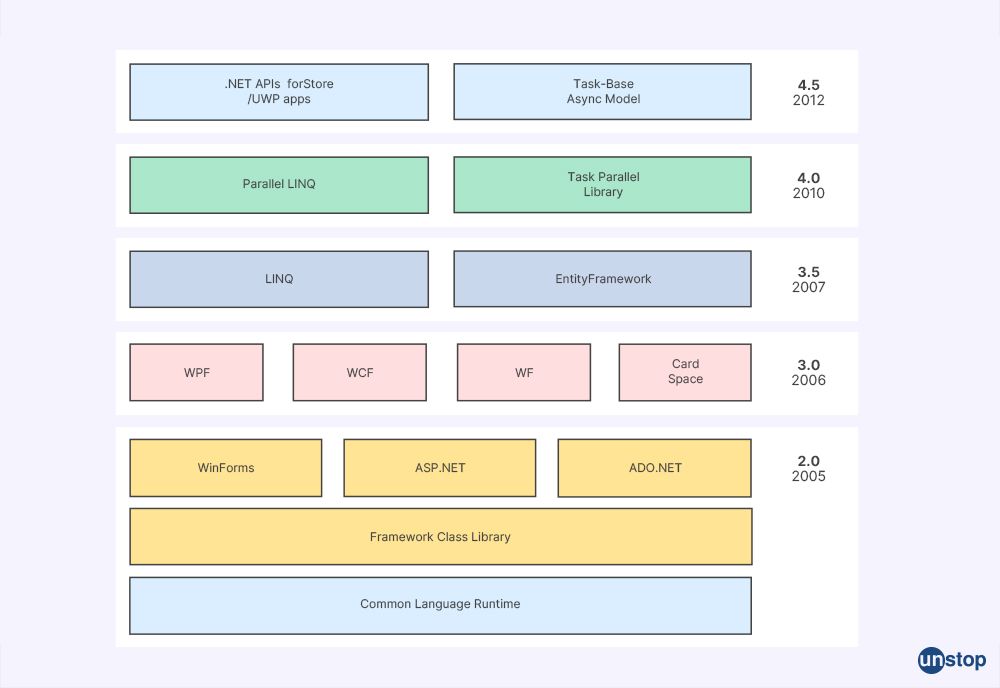
2. What are the applications of .NET?
Applications of the .NET are as follows:
1. Web Applications: ASP.NET creates interactive and dynamic websites, web applications, and web services with easy development models such as MVC (Model-View-Controller) and MVVM (Model View View Model). It helps to develop secure AJAX-enabled rich internet applications even in slow net connections.
2. Desktop Applications: .NET provides Windows Presentation Foundation (WPF) that allows developers to build modern desktop applications for various platforms like Windows 10/8/7, etc., using Visual Studio or any other IDE based on .net libraries. It also supports Windows forms applications with many features over the traditional VB-style programming process.
3. Mobile Application Development: Xamarin is an open source platform from Microsoft that uses C# language specifically designed for mobile device operating systems such OS Android, iOS & Windows Phone 8 etc., enabling code sharing across multiple mobile platforms, thus reducing overall cost for developing apps and at the same time maintaining the quality of the product by utilizing single shared codebase written in C#. (Also Read: C# Interview Questions)
3. Explain the features of .NET.
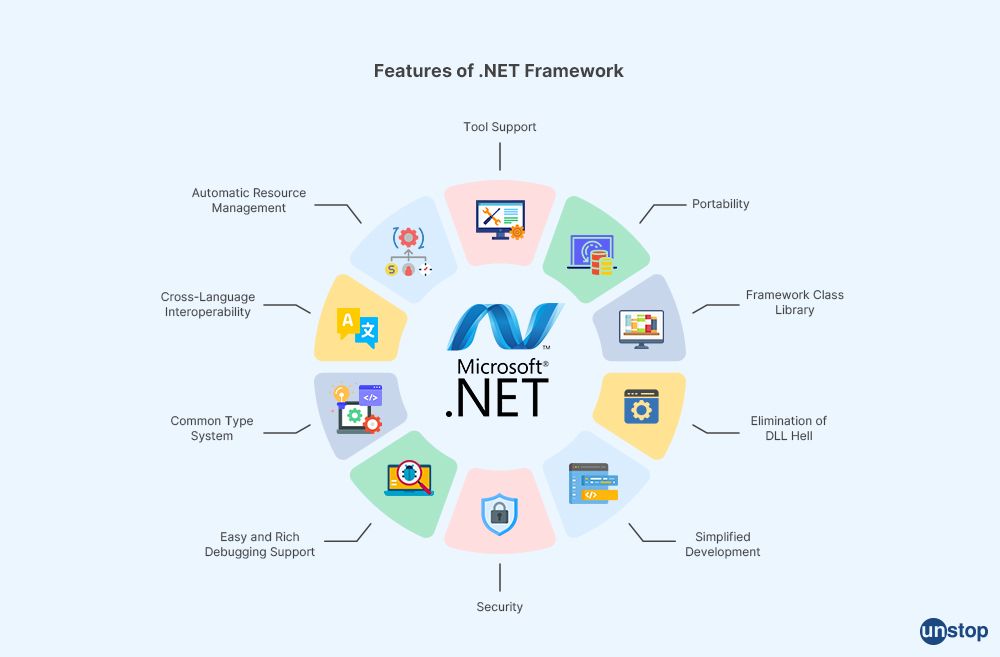
Some of the key features of the .NET framework are as follows:
1. Common Language Runtime: This includes garbage collection, type safety, and thread management, to name a few examples. This powerful feature allows developers to develop and execute .NET code across various languages.
2. Extensive Library: This is the basic component of application development as its library has a huge collection of classes, and functions, which helps us to extend our reach for building fast, secure applications with less effort and in a much better way.
3. Interoperability: It allows programmers to call or use non-.Net compliant elements like COM objects into their program without any issues, thus making it easier to implement the latest existing technologies, effectively reducing complexity significantly.
4. Security: One of the most important features provided by the .NET framework is its security capabilities featuring different levels such as code access security (CAS) authentication & authorization. When developing applications using the .NET platform, users are sure that all data used will be completely secure from unauthorized intrusion.
4. What is the role of unmanaged code in .NET?

Unmanaged code does not need the assistance of a .NET framework to run, such as COM components or C++ code written before the onset of .NET. The role of unmanaged codes is mostly for compatibility, allowing programs with existing legacy components to use them within a .NET system.
5. How can you create an executable file in .NET?
Executable files can be created using compiler tools like Visual Studio from source files and then can be linked together into one file by an assembler program (.exe).
6. What is byte code, and what is its purpose on a .NET platform?
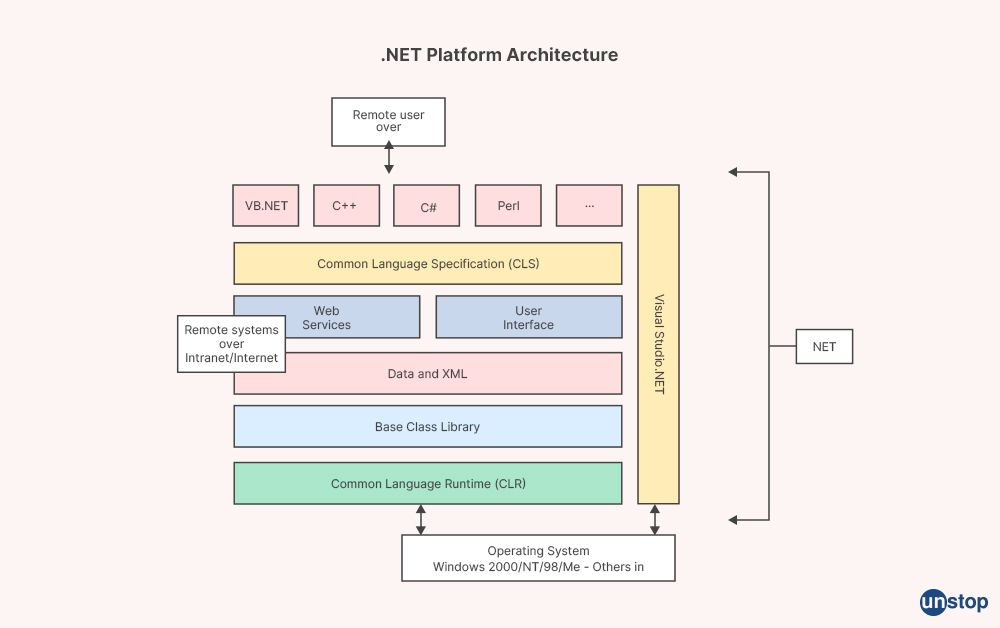
Bytecode refers to compact binary instructions used on the Microsoft Common Language Runtime (CLR) platform to facilitate application execution within this environment while still being language-independent. It functions as an intermediary between native machine language and high-level programming languages, providing developers with a convenient environment to create applications in various computer languages. This allows developers to work efficiently without requiring extensive knowledge of lower-level processes involved in the development process.
7. What are return types used for in the .NET framework?
Return types are commonly used in methods or functions that either need to provide multiple values as output or simply indicate the success or failure of an operation. By using boolean data types, such as
```bool IsSuccessfullyExecuted = myMethod();```
these methods can offer feedback to the user about the execution status of the operation. This allows users to determine whether the operation was successful or not based on the returned value.
8. Can you explain how memory management works in a .NET application development environment?
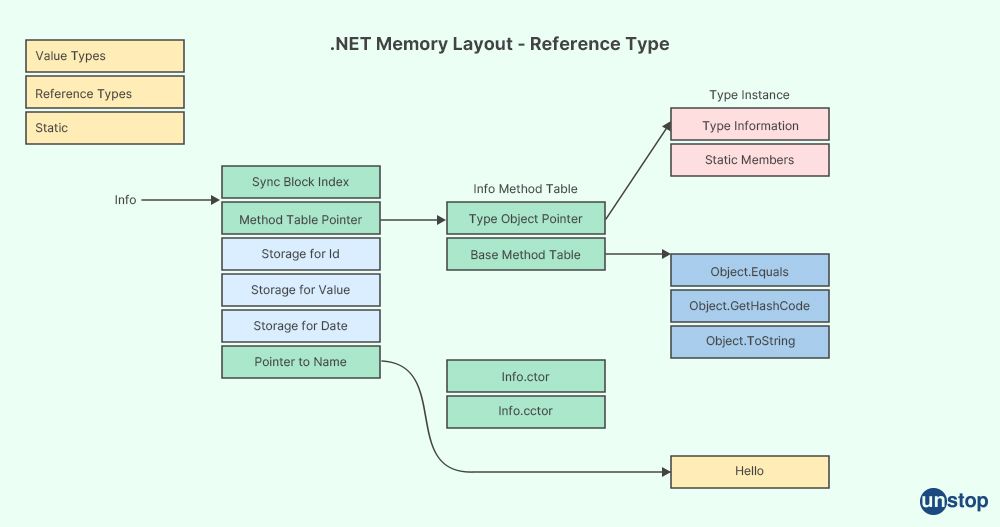
Memory management in .NET is mainly done through the garbage collection process handled by CLR. This involves tracking references to objects and allocating memory accordingly, as well as releasing it once references no longer exist. This ensures that resources are not wasted unnecessarily due to its dynamic nature - something C++ developers have traditionally had trouble with before introducing this feature into their language frameworks too!
9. Why use private constructors when writing applications with the .NET framework?
Private constructors within the .NET framework allow a class or object to control how instances of itself can be created and used, thus discouraging misuse/abuse of access from outside parties by keeping them out of privileged user scope (e.g., for implementing static classes).
10. Explain the usage of Static Constructor within a .NET program.

Static constructors typically initialize any static members associated with a particular type when the first execution request has been received.
This means that the initialization process occurs automatically without any external intervention, ensuring that it happens only once throughout the entire lifecycle, even if multiple instances are required at certain stages of the end-user application development process.
11. Describe different types of constructors available within the .Net Framework.
Types of constructors available within the .Net framework are as follows:
- Default Constructor (initializes member variables using default values)
- Parameterized Constructor (parameters provided)
- Private constructor (class implementation restricting new instance creation from outside source code)
- Static constructor (invoked once per type when the user accesses the first instance)
12. What does the default constructor do, and why should it be used while programming VB Net or C#, .Net?
Default constructors are used to assign default values to all the members of an object during its instantiation. For example, setting integer member variables to zero or initializing string attributes with a null value.
It is helpful because it allows developers to have little manual intervention while creating new instances. This accelerates the development process and ensures consistency in creating object attributes across different parts of applications written/run under the .NET framework platform itself.
13. What are the benefits of using Object Oriented Programming in .NET applications?
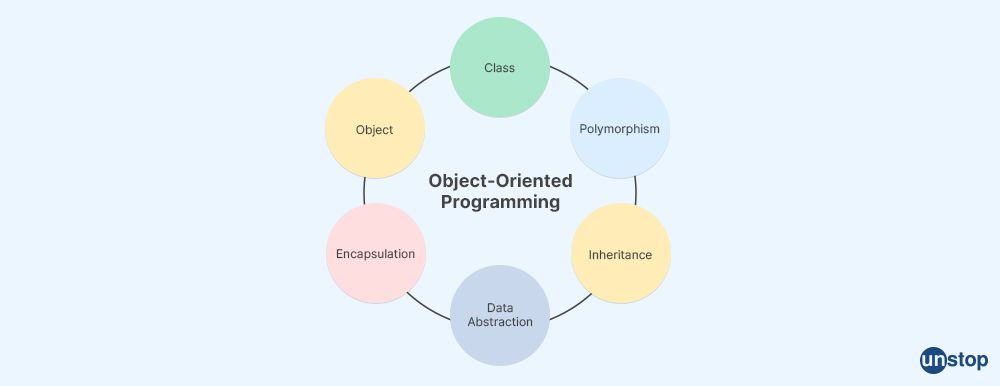
Object-oriented programming (OOP) offers many benefits when developing applications with .NET, including improved design and code reuse, quicker development time, better performance in debugging and execution speed, and easier maintenance and support for concurrent operations.
14. How do short-lived objects work within the .NET Framework Applications?
Short-lived objects are typically created to accomplish certain tasks or processes within the .NET framework applications. They can be instantiated but then can be removed from memory by the Garbage Collector before being reallocated again further down the line if required.
15. What responsibilities does an application developer have when creating dynamic web applications with .NET?
An application developer's responsibilities include,
- Designing dynamic web applications using ASPX pages while implementing business logic through C# code
- Setting up server controls such as GridViews to display data
- Creating forms for users to input information directly on the page or via post-back calls visible inside Visual Studio.
16. How can machine code be utilized to develop custom application domains in the .NET?
Machine code can be used in the .NET framework to develop custom application domains by writing C# or VB code into a CLR, which is then compiled down to an executable format and run on the host machine as part of its program flow logic at runtime. This allows developers to make more intricate changes than would otherwise be possible with straight HTML, CSS, and JavaScript files alone.
17. What is the role of intermediate code in the .NET framework?
Intermediate code is a compiled language-independent representation of the input source code that can be executed on any .NET platform with just-in-time compilation (JIT). It acts as an intermediary between native languages and machine instructions, enabling different components written in different programming languages.
18. How does the .NET framework handle heap memory?
The .NET framework manages Heap Memory using a generational garbage collector, which divides memory into three sections: Gen 0, Gen 1, and Large Object Heaps (LOH). It stores short-lived objects like local variables in Generation 0, while long-lived objects in later generations, such as LOH.
This approach aims to improve the application's performance by reducing time spent on collections and minimizing GC cost associated with each collection cycle by removing only unused objects from the Memory heap.
19. What are some examples of long-lived objects in .NET technology?
Long-lived objects include classes declared outside methods, global or static fields used throughout an application's lifetime, strongly referenced service singletons, etc.
They remain alive until explicitly destroyed via Dispose() method invocation or Garbage Collector triggered Finalize().
20. How does a Garbage Collector work with Logical Unit for memory management within .NET?
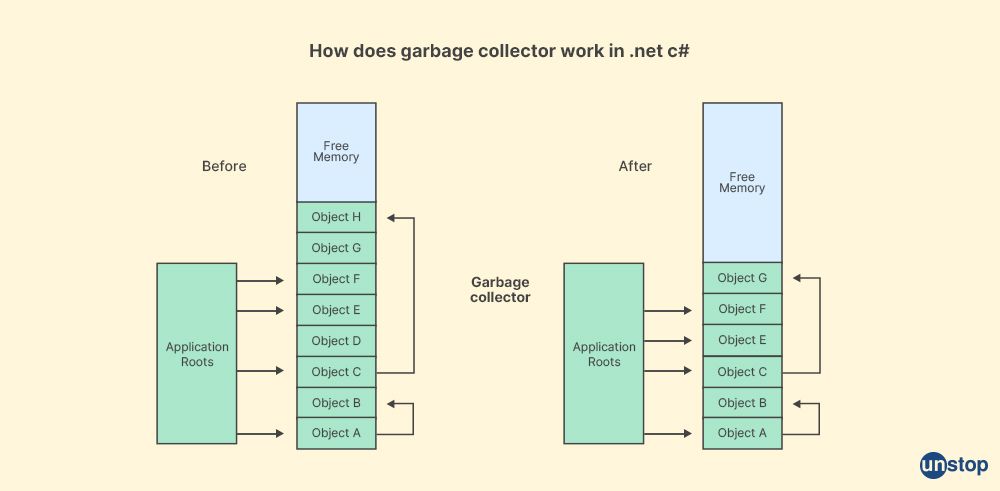
The Logical Unit works with a Garbage Collector for memory management through reference counting within .NET. It helps to track references made to allocated objects. Hence, when no additional references exist, the object becomes eligible for deallocation, and GC reclaims memory from that object.
21. What is a reference variable in .NET?
A reference variable in .NET is a type of object that stores the location or address where an instance of an object can be found in memory. There can be several references to the same piece of data among various objects because it does not actually store the data but rather directs the user to another variable that does.
22. How does an abstract class differ from other classes in .NET?
An abstract class is a generic definition for classes extending from it. It contains members such as methods, properties, and events, that the extending classes must implement according to their unique logic and behaviour. Unlike other classes, they cannot be instantiated directly. They are meant only to define common functionality between descendant forms, so specific implementations may differ by each case needed.
23. What are the benefits of .NET development on a virtual machine?
The advantages associated with using virtual machines are as follows:
- Increased flexibility when running applications on different types of hardware devices without needing cross-compiling tools.
- Improved security due to isolation from other processes running on computer systems while still allowing efficient access rights management.
- Decreased costs associated with development since components within VMs do not require special licenses, plus lower IT operational costs as well.
- Reduced energy wastage and high-efficiency distributions.
- Enhanced software support for modern CPUs.
24. How can building blocks be used to create core applications with .NET?
.NET Core applications provide a range of libraries designed for developing server applications, including back-end services, mobile apps, IoT, and more. These libraries provide building blocks that allow developers to create applications quickly by combining independent components in any desired combination.
25. Explain the development of applications that can be used in the .NET Framework?
Development of applications that can be used in the .NET Framework includes web applications such as ASP.NET; mobile development via Windows Phone or Xamarin (cross-platform C#/F# language); desktop software creation like WPF and UWP (Windows Presentation Foundation/Universal Windows Platform respectively).
It allows developers to code for multiple platforms featuring library-sharing support, reduce duplicate efforts associated with having different source codes created from scratch every time a new target format is considered, etc.
26. What is a console application, and how do you create one with .NET?
A console application is an executable program designed to run inside either of two programs - a command prompt on Windows OS or a Terminal app on MacOS. It allows users to access their system through text input commands. It enables programming logic written in object-oriented languages such as C#/.Net even in the absence of GUI, unlike most other modern applications today.
Creating a console application with .NET requires downloading Visual Studio IDE editor so you may write your source code features and then compile them into standalone executables afterward, depending upon current specific requirements.
27. What is the role of .NET in developing gaming applications?
.NET provides a comprehensive framework for creating gaming applications, which includes game engines, libraries, and other development tools related to deploying games across multiple platforms and devices. It supports console as well as PC-based gaming systems with a strong focus on graphics performance optimization
28. How can mobile applications be developed using .NET Framework?
Mobile applications can be developed using the .NET Framework via mobile application frameworks such as Xamarin or Windows Phone App Studio, along with language support from Visual Basic or C# through cross-platform integration capabilities. This helps in sharing code between platforms like Android and iOS native apps.
29. What are some best practices for writing app code within the .NET environment?
When writing app code within a .Net environment, it is important to ensure proper error handling by adding appropriate validations when required; using optimized algorithms for better CPU cycle utilization; designing components/classes based on SOLID principles; debugging & unit testing before going live are some best practices that should be taken into consideration.
30. How does code encapsulation function differently in a .NET setting than in other languages/frameworks?
Code encapsulation allows the encapsulation of data members, making them inaccessible outside the scope of its code. This allows only external access methods, providing an abstraction layer between user objects, eliminating unwanted dependencies. This results in more loosely coupled codes, thus bringing higher maintainability overheads compared to programming activities conducted through other languages/frameworks.
31. Are there particular considerations for the execution of code written using the .Net framework?
There are several considerations related to performance, memory management, and resource allocation that developers should keep in mind to ensure the reliability and efficiency of their applications.
- Developers should be aware of and avoid common pitfalls in the .NET framework, such as improper resource handling, inefficient coding practices, and potential security vulnerabilities.
- Efficient memory management is crucial to prevent memory leaks and ensure optimal performance. Properly disposing of unnecessary objects, implementing IDisposable where necessary, and using tools like garbage collection help in effective memory management.
- Optimizing algorithms is essential for achieving efficient performance. This involves choosing the right data structures and algorithms for specific tasks, considering time and space complexity, and continually refining code for better performance.
- Allocating resources judiciously is important to enhance process speed without compromising quality. This includes managing connections, file handles, and other resources appropriately, releasing them when they are no longer needed, and avoiding unnecessary resource overuse.
- Ensuring code quality standards is crucial for maintainability and reliability. Thorough testing, code reviews, and adherence to coding conventions contribute to a robust codebase.
By addressing these considerations, developers can create .NET applications that are not only functionally correct but also performant, scalable, and maintainable. It's essential to follow best practices, leverage the features provided by the .NET framework, and stay informed about updates and improvements to continually enhance the development and deployment process.
32. What do fundamental types and base types mean regarding programming with the .Net framework?
Fundamental types and Base type refers to the basic data types predefined within the .Net Framework. They are used in respective applications through Variable Declarations such as integers (Int32) and Boolean values (Boolean) along with more complex ones like DateTime. They have their own distinct characteristics in terms of usage scope and size when declared. Together, they form a hierarchy structure that enhances its importance while developing any projects targetting the .NET platform.
33. Which type of object-related classes are used when working with objects on the .NET platform?
The .NET platform uses classes that relate to objects in various ways. Common types of object-related classes include:
1. Data transfer objects (DTOs): DTOs are plain old CLR objects (POCOs) used for transferring data between layers or processes within an application; they have no business logic associated with them.
2. Models: They represent the properties of entities stored in databases, such as customers or products; these sometimes contain business logic methods related to each entity's attributes and behavior.
3. View Models: They can support views when properties exposed by models need further formatting or rules applied before being presented on the UI layer.
4. Repositories: Repositories act as intermediaries between Entity Framework models and other parts of an application, providing access methodologies for manipulating model instances while ensuring their integrity across multiple requests from different components within an application stack.
34. What is the role of a Runtime Environment in .NET?
A Runtime Environment in .NET executes the intermediate language instructions produced by the compiler. This ensures a dedicated environment to execute applications compatible with a given version of the .NET framework.
35. How do memory locations and memory space work together in .NET?
In .NET, memory locations and memory space work together by providing two layers of data storage within an application's code base or program set up according to certain configurations. These are implemented when a user initiates actions such as read/write operations on memory addresses or location registers. They are used for storing values that may change over time depending on input from users and other forms of interaction.
36. What are the special methods?
Special methods are commonly found in programming languages like C# and Visual Basic. They are included in Microsoft's common interface library (CLI) integrated into .Net Framework, which contains functions useful for tasks related primarily to simple arithmetic calculations, database transactions, etc.
37. How can an EXE file be generated using the .NET framework?
An EXE file can be generated using the .NET Framework via compilation from high-level source codes such as C++ & Java, among others, or directly from Intermediate Language Components (ILCs). The resulting exe files contain machine executable code and other metadata necessary during runtime execution. They are compatible with multiple platforms due to the different deployment models available, e.g. Native, Web script, MSI installer packages etc.
38. What is the difference between Default Access Modifiers and Internal Access Modifiers in context of .NET?
The difference between Default Access Modifiers and Internal Access Modifiers in .NET lies mainly within the scope they are accessible, where a default access modifier is visible only within its assembly (for example, if your code was built for an Intranet application).
In contrast, internal access modifiers can be accessed by any assembly that references them directly or indirectly, including applications that run on external computers through Internet protocols such as HTTP/HTTPS.
39. What is the open-source platform used for building .NET applications?
The open-source platform used for building .NET applications is the .NET Framework, which includes languages such as C# and VB.Net.
40. Explain read-only variables in .NET in simple terms.
Read-only variables are an important concept in .NET programming and can be used for various purposes. Read-only variables provide better control over the data stored within them because it cannot be changed once set. This prevents accidental or intentional changes to the data, which may have unforeseen consequences if left unchecked. They also improve performance compared with mutable (non-read only) variable types because their simpler structure requires fewer operations for general access and manipulation by the developer or program itself.
41. How does a software framework facilitate the development of heterogeneous applications using .NET?
A software framework simplifies the development of heterogeneous applications by providing pre-defined structures and components like classes and interfaces. It uses pre-defined methods that developers can quickly use to develop features without needing to write all code from scratch each time they need a feature within an application or website developed on the .Net framework.
42. Could you describe the role of a software environment when working with ASP.NET core?
When working with ASP.NET core, a software environment provides tools for developing web apps, including libraries, compilers, etc. These offer an easier way for Windows computer users to work directly with versions of programs written specifically designed for Microsoft's Windows Operating System rather than having to install additional software packages or frameworks onto their computers.
43. What do we mean by implicit conversions, and how can they be achieved in .NET?
Implicit conversions are automatic type casts between different data types within the same family (e.g., ints/longs/doubles). Implicit conversions allow developers more flexibility in writing shorter lines of code than if the explicit conversion was done every time. This can be achieved through type conversion functions such as Convert.ChangeType() or by using the "as" keyword when declaring a variable of one data type but assigning it another value that is compatible with it.
44. What is the purpose of Framework Class Library in .NET?
The Framework Class Library (FCL) in .NET provides access to common services that developers can use for building applications. It includes classes, interfaces, and value types which support the core tasks of input/output operations, string manipulation, cryptography, and data access, among several other functionalities.
45. How many types of constructors are there in .NET?
Two types of constructors are available in .NET, namely:
- Default (parameter less) constructors
- Parameterized constructors
46. What language compilers are used for coding in .NET?
Commonly used language compilers included Microsoft's .Net framework Visual Basic, C#, F# or any other third-party compiler like Silverlight Compiler.
47. Can you name some security controls available to developers while coding using .NET technologies?
Security controls provided with .NET include
- Authentication such as Windows authentication or Forms Authentication using User name/password combinations
- Authorization based on roles/claim
- Encryption mechanisms such as Data Protection API (DPAPI)
- Validation checks performed for acceptance criteria against user inputs etc.
48. What user controls can be created by programming with Microsoft's NET framework technologies?
Using Microsoft's NET framework technologies, developers can create various user control components, including web server controls ((HTML tags), graphics editor tools such as Adobe Illustrator CS6 Plug-In within Photoshop apps, custom Windows forms hosting objects programmatically created at the run time, etc.
49. How many types of assemblies exist within the scope of a given version of .NET?
Assemblies exist generally have three different scopes, namely
- Private Assemblies (stored within the same directory as the application)
- Shared/Public Assembles (available to all applications in a shared location)
- Global Assemblies (referenced from GAC, i.e., Global Assembly Cache)
50. What does a garbage collector do when it runs a program written on any version of the Dot Net Platform?
Garbage Collector within .NET helps release memory resources no longer used by running programs, thus improving overall system performance.
Example:
using System;
public class HelloWorld{
static void Main(){ //Main function
Console.WriteLine("Hello World!"); //Prints out "Hello World!"
} }
51. What is the process of language-specific compiler in a .NET application?
When it is running, Just-In-Time compilation converts MSIL to machine code.
The process of a language-specific compiler in a .NET application is as follows:
First, the source code of the .NET application is converted into Microsoft Intermediate Language (MSIL), an intermediate language, from one of the supported programming languages, such as C# or Visual Basic.
Then, during runtime, the Just-In-Time (JIT) compilation converts the MSIL code into machine code.
Example:
public class Program {
public static void Main(string[] args) {
Console.WriteLine("Hello World!"); } }
When compiled with csc (part of .NET), it creates an executable file named "program.exe," which can be run on Windows systems without any other dependencies and will output 'Hello World!'.
52. How can experienced professionals best use .NET to their advantage?
Experienced professionals can use features like memory management and garbage collection provided by .NET Framework. This negates manually tracking down resources used by their applications while writing them and offers security models at runtime.
It also offers easier debugging due to integration with tools like Visual Studio Code. Since .NET frameworks contain a wide range of APIs, developers can adopt modern development patterns & practices and promote code reuse.
53. What should be included in the structure of a .NET application folder?
The structure of a .NET application folder should include:
1. Folders related to the source code files
2. Project files with their references (solution items and class libraries)
3. Compiled executables (.exe) or packages (DLLs)
4. Configuration settings in App.config or Web.config files
5. Start-up pages like index/default HTML page
6. Content for the user interface like images, CSS, etc.
7. Test projects along with their results from running unit tests and integration testing scenarios
8. Automation tools available in Visual Studio IDE
54. Explain the code sample written in a programming language supported by the .NET Framework.
The code sample for a programming language supported by the .NET Framework is as follows:
using System;
namespace HelloWorld {
class Program {
static void Main() {
Console.WriteLine("Hello, world!");
} } }
This program prints out "Hello World!" on the console when executed on Windows machines with relevant software stack installed, like .Net SDK from the Microsoft website. Before execution, the program must be compiled into an intermediate language (MSIL) that the underlying machine can understand.
55. What interface type does Visual Studio provide when creating a user interface for an application written using C# in the .NET Framework environment?
Visual Studio provides developers with a form-based interface type while creating a user interface for an application written using C#. It allows developers to encapsulate the logic required to invoke and set up a visual layout that will be eventually rendered at runtime after executing the application executable file. This negates the need for users to interact directly via source code.
56. What is the purpose of a try-catch block in .NET?
A try-catch block in .NET handles any errors encountered while executing code within the block. The program will go to the catch statement and run all code if an error occurs before continuing with the regular execution flow. This makes managing exceptions at runtime easier because developers no longer have to check each line of code for potential issues manually.
57. How can dead objects be addressed in .NET programming?
Dead objects can be addressed in .NET programming by using garbage collection techniques such as introducing weak references.
A weak reference allows the garbage collector to collect an object even if there are references to it, but those references are only weak references. If an object is only referenced by weak references, it is considered eligible for garbage collection.
By introducing weak references, you can help ensure that objects that are no longer needed are promptly identified, and their resources are reclaimed efficiently. This can be particularly useful for managing resources like memory in a more responsive manner, freeing up system resources sooner than if you were to rely solely on regular garbage collection cycles.
58. What are the main components of an original location portable executable (EXE) file for .NET applications?
The main components of an original location portable executable (EXE) file for .NET applications include:
- Application manifest files and assembly metadata - It contains information about methods, types, and other content stored in assemblies.
- Assembly versioning data - It allows multiple versions of type libraries and COM components.
- Security permissions configuration settings - These are specific per application instance
- Additional miscellaneous related items - These are required at build time during packaging but not necessarily needed during general usage scenarios unless explicitly overridden from defaults set forth at compile time.
59. How can real applications be developed using the .NET framework?
Real applications can be developed using the .NET framework by leveraging features available through its libraries, such as LINQ, WPF and Windows Forms (WinForms). Using real application tools, developers can create desktop or web-based applications with interfaces that are tailored to their specific needs. Resources used for development will depend on which type of app is being built, but all core components should almost always include some form of user interaction layer backed by a database system such as SQL Server or Entity Framework Core, depending on requirements outlined in the project design phase.
60. What type of environment does application space provide for executing code with .NET framework class library support?
Application space provides an environment for executing code with .NET framework class library support so application logic written within it can interact with native code, without having to resort to separate layers and methods like remoting technologies. This would otherwise incur overheads due to data exchange needing serialization/deserialization between tiers, causing unnecessary performance delays unless explicitly necessary under particular scenarios.
61. What are the key considerations when designing a .NET Core application?
When designing a .NET Core application, developers should consider the hardware requirements for their particular project, performance testing, and optimization techniques to ensure scalability. Additionally, consideration should be taken when choosing development frameworks such as ASP.NET Core application or Entity Framework to align with their desired architecture patterns and guidelines.
62. How can developers ensure their .NET remains an efficient application and optimized for performance?
To ensure an efficient .NET application optimized for performance, developers must use lightweight design options that involve caching mechanisms wherever possible, along with leveraging asynchronous programming styles to reduce network latency issues during process execution periods.
63. What is the best way to measure and track an application size regarding memory resources?
One way to measure and track an application size regarding memory resources is to use a tool such as the Microsoft Windows Performance Tools, which allows you to monitor a wide range of metrics, including memory, CPU Usage, I/O Activity, and other performance indicators. Alternatively, many third-party profilers can help you identify areas where your application's memory consumption could be optimized for better performance.
64. What role does Application Framework play in building successful .NET projects?
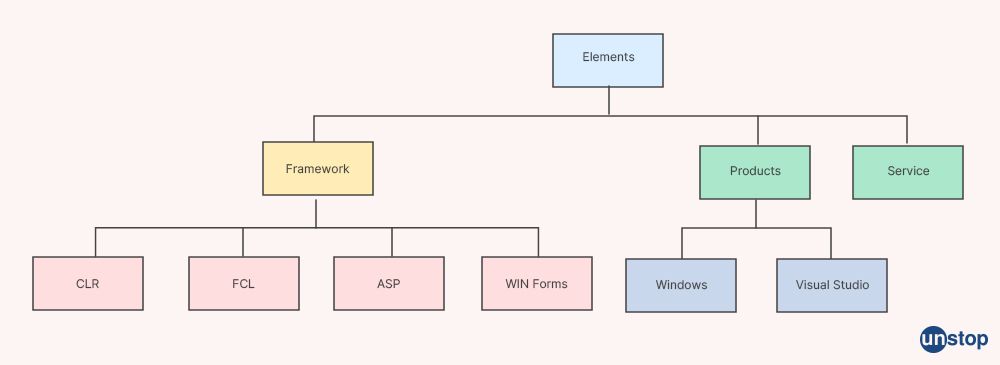
The Application Framework is critical in building successful .NET projects since it provides the necessary infrastructure and components to create an application's architecture. It is also a fundamental base for developers to build custom code or external third-party functions based on their specific project requirements.
65. Can you list everyday events that must be managed while developing an ASP.NET core web application?
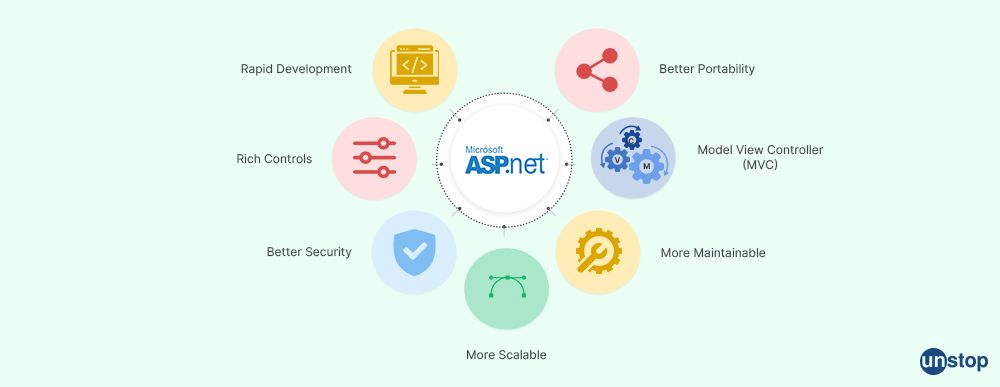
Common events that need to be managed while developing an ASP.NET core web application include user login/ logout actions, form submissions, database interaction (CRUD operations), file uploads & downloads, access requests & permissions for various resources within the System, API calls, etc.
66. Is there any standard approach for creating scalability-friendly applications at the application level using .NET framework tools and frameworks?
Yes, the .NET framework provides several tools and frameworks that allow developers to create scalable applications at the application level effectively from the ground up – most notably ASP.NET Core web applications. This technology leverage features like high availability clusters with auto-scaling capabilities, allowing more efficient resource utilization while still providing excellent response times for users on all platforms regardless of the communication channel (HTTP / HTTPS).
Example Program:
using System;
using System.Collections.Generic;namespace App
{
public class MyApp
{
string username = ""; // Added data type for 'username'int accessLevel = 0;
bool loggedInFlag = false;Dictionary<string, int> user_access_level = new Dictionary<string, int>();
public void SetUsername(string name)
{
this.username = name;
}public string GetUsername()
{
return this.username;
}public void LoginUser()
{
if (user_access_level[this.username] > 0)
{
this.loggedInFlag = true;
}
else
{
Console.WriteLine("Access denied"); // Replaced printf with Console.WriteLine
}
}
}class Program
{
static void Main()
{
MyApp appInstance = new MyApp();
appInstance.user_access_level["John"] = 2;
appInstance.user_access_level["Admin"] = 3;
}
}
}
67. What are the main features of the .NET Framework?

The .NET Framework is a Microsoft-developed platform that enables developers to build enterprise applications using supported languages, such as C# and Visual Basic. It consists of an extensive library of programming code from which developers can draw and a powerful runtime engine for executing programs that can be written in that language. Additionally, it contains tools specifically designed to help build and run the application, such as compilers, debuggers, and profilers.
68. How does the code compile a code block within an application using the .NET Framework?
To compile the code block within an application using the .NET Framework, first, create and save your source file as a text-based C# or Visual Basic file with a ".cs" extension for C# and ".vb" for Visual Basic saved usually in "My Documents\Visual Studio 2013\Projects".
Then open up Microsoft's IDE development tool called 'Visual Studio' from where you can select either the Debug->Start Without Debugging option (Ctrl+F5), which will execute the current project without debugging mode.
Or, use Build->Build Solution(Shift+Ctrl+B) command, which compiles all projects into assemblies and then creates executable files under each project's output directory.
69. Is the code legal to redistribute executable code built on top of Microsoft's managed extensions for Visual Studio - NET (MEF)?
Yes, the code is legal to redistribute MEF-based executable code provided users adhere to licensing terms associated with applicable components distributed by Microsoft via the MSDN downloads section. As long as obligations around redistribution are observed, there should be no problem allocating commercially available executables built using .NET platform tools.
70. What are the integral types available in .NET?
.NET provides a range of integral types for representing whole numbers, including signed and unsigned integers across various sizes and bit lengths. The eight primitive integers (”int”) types are:
1.SByte (signed 8-bit),
2. Byte (unsigned 8-bit),
3. Int16 (signed 16-bit),
4. UInt16(unsigned 16-bit),
5. Int32(signed 32 - bits ),
6. UInt32(unsigned 32 -bits ),
7. Int64(Signed 64 - bits ),and
8. UIn64t (Unsigned 64 - Bits).
Each type has an upper limit on the maximum value it can store and properties that describe its size in bytes, number of digits, etc., which can be used to determine appropriate values within specific ranges when designing algorithms or applications involving numeric data processing.
71. What do you understand by lazy loading in .NET?
Lazy loading is a programming technique employed in .NET and various other programming environments to defer the loading of an object or the execution of a task until the point at which it is actually needed. This approach is particularly useful for optimizing performance and resource utilization in applications.
In the context of .NET, lazy loading is commonly associated with the loading of data or the instantiation of objects. Instead of loading all data or creating all objects at the beginning, lazy loading allows the program to delay these actions until the data or objects are explicitly requested or accessed. This can result in more efficient resource usage, as only the necessary components are loaded into memory when needed, rather than loading everything upfront.
Is your skill set missing something? Yes? Check out Unstop Pro to step-up
Conclusion
Navigating .NET developer interview questions can be a challenging yet rewarding experience for aspiring developers. In conclusion, a successful journey through .NET interviews requires a comprehensive understanding of fundamental concepts such as the .NET framework, web development core frameworks like ASP.NET MVC and Web Forms, memory management, and the Global Assembly Cache. Additionally, showcasing proficiency in implementing advanced techniques like lazy loading demonstrates a nuanced understanding of improved performance optimization.
Practical experience, problem-solving skills, and adaptability are equally crucial as employers seek candidates who can seamlessly apply theoretical knowledge to real-world scenarios. Effective communication, both in articulating technical concepts and discussing problem-solving approaches, plays a pivotal role. Lastly, continuous learning and a commitment to staying current in the dynamic field of .NET development contribute to a well-rounded and compelling candidacy. Approaching interviews with a balance of technical prowess, practical experience, and a passion for learning will undoubtedly pave the way to success in the competitive landscape of .NET development.
Suggested reads:
- Best Books to Learn JAVA for Beginner and Intermediate Developers 2024
- Difference Between Abstract Class And Interface In C#
- 10+ JavaScript Projects For Beginners
- What Is The Difference Between DELETE, DROP And TRUNCATE?
- Have No Idea Of Coding? Follow These Guidelines To Become A Data Scientist (With A Step-By-Step Guide)
I am a storyteller by nature. At Unstop, I tell stories ripe with promise and inspiration, and in life, I voice out the stories of our four-legged furry friends. Providing a prospect of a good life filled with equal opportunities to students and our pawsome buddies helps me sleep better at night. And for those rainy evenings, I turn to my colors.
Login to continue reading
And access exclusive content, personalized recommendations, and career-boosting opportunities.
Subscribe
to our newsletter
















Comments
Add comment